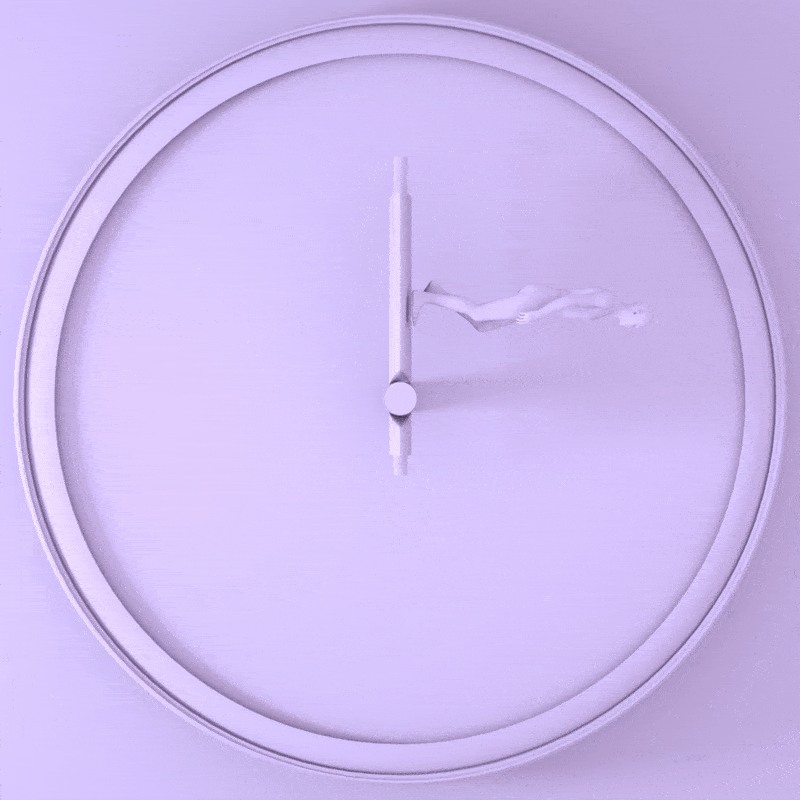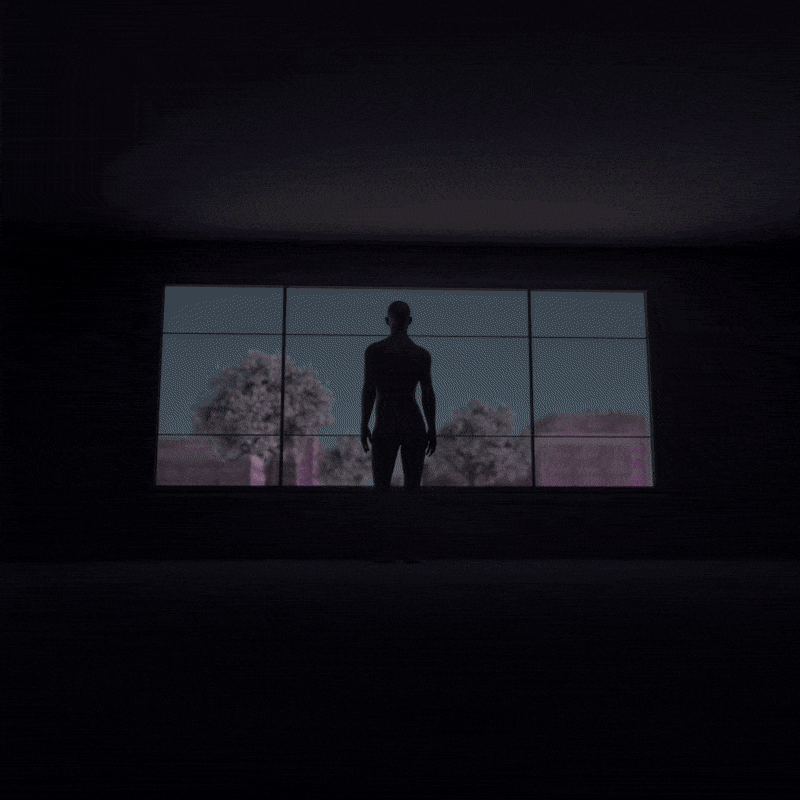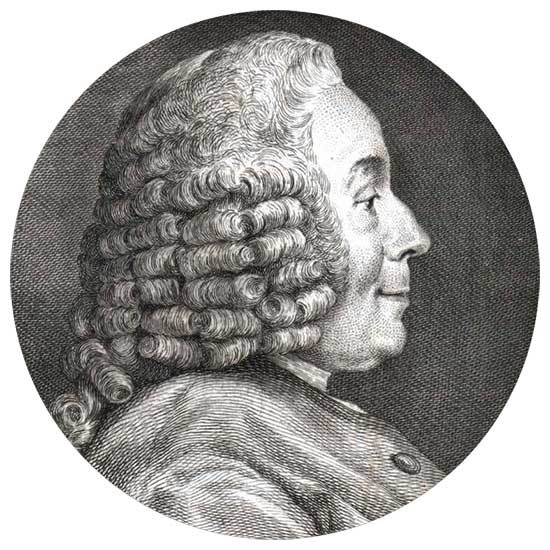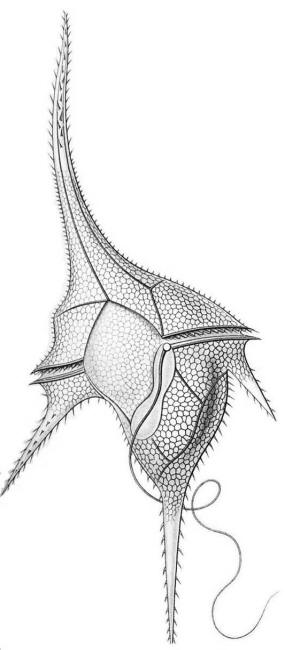|

by Elysium Health
December 18,
2017
from
EndPoints Website

Animations by Zolloc
for
Endpoints.
Two leading
scientists
explain how
circadian rhythms work
and offer advice
on lifestyle changes
to improve your
health...
Editor's Note:
This story is
focused on the
science of
circadian rhythms,
the 24-hour
physiological patterns
that most
organisms,
including
humans, follow each day.
This article is
intended to review the current
science on the
topic and not principally to offer advice,
though we do
present potential lifestyle modifications.
It is not an
exhaustive review of the field of research,
and we will
continue to update it
as more science
emerges.
Highlights:
-
Maintaining consistent and healthy circadian rhythms
may help improve overall health and prevent chronic
diseases.
-
Think beyond sleep: Circadian rhythms are influenced
by eating, exercise, and other factors.
-
Learn the idiosyncrasies of your own rhythms, your "chronotype,"
then adapt them to the best practices indicated by
scientific research.
Before You Start -
A Quick Glossary
-
Circadian:
Recurring
naturally on an approximately 24-hour cycle, even in the
absence of light fluctuations; from Latin circa
("about") and diem ("day").
-
Zeitgeber:
An environmental
cue, such as a change in light or temperature; from German
zeit ("time") and geber ("giver").
-
Endogenous:
Having an
internal cause or origin.
-
Entrainment:
Occurs when
rhythmic physiological or behavioral events match their
period to that of an environmental oscillation; the
interaction between circadian rhythms and the environment.
-
Diurnal:
Daily, or of each
day; from Latin dies ("day") and diurnus
("daily").
-
Master Clock:
A pair of cell
populations found in the hypothalamus, known as the
suprachiasmatic nuclei (SCN); these cells contain the
genes that govern circadian rhythms.
-
Mutant Gene:
A permanent
alteration in a DNA sequence that makes up a gene; used by
chronobiologists to identify clock genes, by identifying the
mutant gene on animals with arrhythmic circadian habits.

Picture a plant trying to perform photosynthesis at night...
Without light, it's a
short drama...
"Plants are dealing
with life and death," said Sally Yoo, assistant professor in the
Biochemistry and Cell Biology Graduate Program at the University
of Texas Health Science Center at Houston (UTHealth), somberly.
"If they don't follow
circadian rhythms, they'll die."
For humans, the prognosis
would be slightly less bleak.
"Even if you deleted
the clock gene [an important gene regulating circadian rhythms],
you wouldn't die immediately," Yoo said. "But you will suffer."
Likely problems?
Constant psychological
confusion and heightened risk for chronic disease, among other
things. Life's tough when everything's out of sync.
Sally Yoo's
colleague, Jake Chen, an associate professor in the same
department, put it another way:
"In our life, we say,
'Timing is
everything.'
But that's an
exaggeration.
It is not, however,
an exaggeration to say,
'There is an
optimal time for everything.'
In our body, it's the
same.
Within individual
cells and within each tissue or organ there's a time for every
physiological process. The circadian clock is the master
mechanism, or timer, to make sure that everything runs smoothly
and according to plan.
That is a fundamental
function."
About
the Experts
-
Scientist: Zheng "Jake"
Chen
Education: Ph.D.,
Columbia University, NY, Postdoctoral Fellow, The University
of Texas Southwestern, Dallas, TX
Role: Associate
Professor, Biochemistry and Cell Biology Graduate Program,
University of Texas Health Science Center at Houston
Recent Paper:
The small molecule Nobiletin targets
the molecular oscillator to enhance circadian rhythms and
protect against metabolic syndrome.
Area of Study: Small
molecule probes for chronobiology and medicine.
-
Scientist: Seung-Hee
"Sally" Yoo
Education: Ph.D., Korea
Advanced Institute of Science and Technology
Role: Assistant
Professor, Biochemistry and Cell Biology Graduate Program,
University of Texas Health Science Center at Houston
Recent Paper:
Period2 3'-UTR and microRNA-24
regulate circadian rhythms by repressing PERIOD2 protein
accumulation.
Also,
Development and Therapeutic Potential
of Small-Molecule Modulators of Circadian Systems.
Area of Study:
Fundamental cellular mechanisms in circadian rhythms and
deciphering physiological and pathological roles of the
clock.
Chen and Yoo study
circadian rhythms, the 24-hour physiological patterns that most
organisms, including humans, follow each day.
These rhythms are
hardwired from millions of years of the world spinning around. The
system is old, robust, flexible.
It's the product of an
organism's internal biological clocks and environmental cues - most
notably, the sun, but also many other factors - which govern our,
-
behavior
-
hormone levels
-
sleep
-
body temperature
-
metabolism
The so-called "master
clock" governing human circadian rhythms is the suprachiasmatic
nucleus (SCN),
a pair of cell populations packed with genes that carry out this
function (including Clock, Npas2, Bmal, Per1, Per2, Per3, Cry1, and
Cry2), located in the hypothalamus portion of the brain.
While molecular clock
genes also exist elsewhere - the kidney, liver, pancreas, muscles,
so on - the SCN acts as the chief executive officer, instructing
the rest of the body to stay on schedule and figuring out how to
incorporate cues from the environment.
(For a brief digression,
see how exactly the SCN works in an interactive feature by
The Howard Hughes Medical Institute.)
As we'll discuss later, being good to our natural rhythms improves
daily physiological and psychological function - and ultimately
short- and long-term health.
Reducing the wear and
tear on the clock keeps it fresh, maintaining what Yoo called "a
robust clock" later in life.
Chen was even more
emphatic:
"I cannot emphasize
enough how important the circadian rhythm is for prevention of
chronic diseases," he said. "And for long term benefits toward
health-span and eventually life-span."

The History -
Establishing the Fundamental Biology of Circadian Rhythms
The first thing to know about the study of circadian rhythms, also
known as chronobiology, is that with few exceptions all
organisms on the planet follow a circadian clock.
From daffodils to
sparrows, zebras to humans, everything under the sun follows the
pattern of the sun.
In 1729, French scientist
Jean-Jacques d'Ortous de Mairan recorded the first
observation of an endogenous, or built-in, circadian oscillation
in the leaves of the plant Mimosa pudica.
Even in total darkness,
the plant continued its daily rhythms...
This led to the
conclusion that the plant was not simply relying on external cues,
or zeitgebers, but also its own internal biological clock.

Portrait of French astronomer and geophysicist
Jean-Jacques Dortous de Mairan (1678-1771)
by
artist Simon Charles Miger.
Two hundred years later, in the mid-20th century, the
world of modern chronobiology blossomed.
The field benefitted from
contributions from a number of scientists, notably,
Colin Pittendrigh, the "father
of the biological clock." Pittendrigh studied the fruit fly
Drosophila and shed light on how circadian rhythms entrain, or
synchronize, to light-dark cycles.
Jürgen Aschoff, a friend of
Pittendrigh, also studied entrainment modeling, although they
reached different conclusions about the manner in which
entrainment occurs (parametric versus non-parametric, which you
can read more about
here and
here).
John Woodland Hastings and his
lab also made important foundational discoveries about the role
of light in circadian rhythms by studying luminescent
dinoflagellates, a type of plankton.
Erwin Bünning, who studied plant biology, also contributed
foundational research in entrainment modeling, describing the
relationship between organisms and light-dark cycles.

Ceratium hirundinella,
a
dinoflagellate.
Ernst
Haeckel (1834–1919)
The next phase of chronobiology discovery began to
articulate the specific molecular and genetic mechanisms of
circadian rhythms.
This came from the work
of
Ron Konopka and
Seymour Benzer, who in the
early 1970s aimed to identify specific genes that controlled the
circadian rhythms in fruit flies.
Konopka and Benzer are
credited with discovering that a mutated gene, which
they called 'period,'
disrupted the circadian clocks of the flies.
This was the first
discovered genetic determinant of behavioral rhythms.
-
Jeffrey C. Hall
-
Michael Rosbash
-
Michael W. Young,
...expanded Konopka and
Benzer's work by successfully showing
how the 'period' gene worked on the
molecular level.
Hall, Rosbash and Young
- who were awarded the 2017 Nobel Prize in Physiology or
Medicine - isolated the 'period' gene, and then showed how the
clock system worked on a molecular level.
Jumping from fruit flies to mice, Joseph Takahashi and his
team discovered the
mammalian clock gene in 1994 -
appropriately dubbed clock - and characterized it as an,
"evolutionarily
conserved feature of the circadian clock mechanism."
This gene discovery,
along with the body of work by Hall, Rosbash, Young and the
scientist Michael Greenberg, led to a watershed in
chronobiological knowledge.
Within a few years, the
genes informing circadian rhythms in lower organisms were largely
worked out.
Things have progressed steadily ever since, and, many of the
findings in fruit flies and mice have shown remarkable conservation
across species, meaning that there are analogous circadian genes
that control the rhythms of more complex animals,
including humans.
"The rising and the
setting of the sun is still the primary influence on circadian
rhythms, but other systems have steadily grown in scientific
inquiry."
The Current Research
- Articulating the Role of Circadian Rhythms in Human Health and
Disease
It's important to note that the biology of circadian rhythms is
incredibly complex - there are multiple scientific journals
dedicated to the field of research - and as a result our
understanding of the role biological clocks play in health is mostly
a result of animal studies and human epidemiological studies.
The experiments in lower
organisms help articulate the molecular and genetic mechanisms at
play, and then scientists can look at, say, how sleep disruption
leads to
increased incidence of,
-
type 2 diabetes
-
obesity
-
cardiovascular
disease
Indeed, one area of study
that's especially promising
is sleep.
Scientists are now
implicating a lack of sleep and the consequent disruption of
circadian rhythms in the development obesity and depression, as well
as most chronic diseases.
Studies even show that a
lack of sleep may have unexpected side-effects like
not being able to read facial
expressions.
The understanding of how circadian rhythms work has also expanded
well beyond interaction with the light-dark cycle.
"We have social cues,
eating cues, and exercise or activity cues - it's very
diverse," Yoo said.
The rising and the
setting
of the sun is still the primary
influence on circadian rhythms, but other systems have steadily
grown in scientific inquiry.
A large body of work has
demonstrated that diet is a key extrinsic cue interacting with the
intrinsic clocks, including Dr. Satchidananda Panda's work on
time-restricted feeding, or how the
time of eating impacts health (The
Complete Guide to the Science of Fasting.)
Overall, it is now clear that circadian rhythms perform a systemic
role to orchestrate all aspects of physiology in our body, including
vital organ functions, metabolism, immunity, cognition and more.
Yoo's research has been
expanding the field,
partnering with a chronic pain specialist
to study the rhythms of pain in patients.
Work is also being
conducted on the role of the light-dark cycle and
disruptions in circadian rhythms by jet lag
on cancer growth. Such studies of circadian rhythms under normal and
disease conditions are teaching us important new insights that can
be harnessed for lifestyle changes (when to eat, how much to sleep)
and for discovering drugs that can help modulate circadian rhythms.
And there is plenty more
research to be done in virtually all aspects of human health and
disease.

The Takeaway -
Why Does Awareness of Your Circadian Rhythms Matter?
An awareness of the fundamentals of circadian rhythms can have both
short- and long-term effects on health.
"Lifestyle changes
are the best gift you can give yourself," Chen said. "If you
manage your lifestyle, medicine and technology could all be
secondary for a long time during your life."
In the short-term, animal
and human studies suggest that following lifestyle practices that
support healthy circadian rhythms could support cognition,
alertness, coordination, cardiovascular efficiency, the immune
system, consistent bowel movements, and sleep.
In the long-term, there
is evidence supporting
reduced risk of chronic diseases
and an extended healthspan.
"It's a chronic
process to maintain it," Chen said. "The effects may not
manifest in a few days, but over time, the benefits will be
enormous."
So how can you best
pursue a lifestyle in sync with your circadian rhythms?
The first thing you need
to do is pay attention to your natural rhythms. Circadian rhythms,
while generally built on the same foundation,
vary from person to person because
of age, genetic, and environmental differences.
Morning people like
mornings better. Night people like nights better.
Paying attention to our
natural inclinations, also known as our individual "chronotypes,"
allows us to incorporate the best practices from circadian rhythm
research while also acknowledging that there's no one-size-fits-all
approach.
The second best thing you can do for yourself is establish a
consistent routine - and that means seven days per week.
Yoo discussed the idea of
"weekend jet lag," (or "social jet lag") where people throw off
their rhythm with atypical habits, for example, eating and going to
sleep later, waking up later, and exercising at different times of
the day. This can cause the same kind of negative effects as
changing timezones.
The closer and more
consistently you can keep your routine, the better your body will
run on that routine.
Lastly, incorporate the research, which we present in detail for
sleep, eating, and exercise, below. Many of the lifestyle changes
the studies suggest - for example, that
eating right before sleeping is a bad idea
- have little downside.
Eating bigger meals
earlier in the day and smaller meals in the evening is easy enough
to try. Likewise, sleeping on a standard schedule, with seven to
eight hours of sleep per night, has no apparent downside.
At worst, you'll feel
rested, and at best you'll improve your prospects for a healthy
life.
Best Practices
- Some Sleeping, Eating, and Exercise Tips for a Healthy Lifestyle
Sleep
The most important thing you can do is keep your sleep and
waking times consistent and get enough sleep -
seven to nine hours is usually
considered the right amount for adults.
At this point the
scientific research on not getting enough sleep or having
disruptive sleep is conclusive:
It has a negative
impact on mood, focus, cognitive function, and ultimately is
linked to chronic disease.
What's more some
scientists suggest that circadian misalignment caused by social
jet lag may be a widespread phenomenon in the western world
contributing to health problems.
So when should you sleep? Typically the body begins to secrete
melatonin around 9:00 p.m.
This is the trigger
to shut things down and go rest. Melatonin secretion ends around
7:30 a.m., and during the day, there is virtually no melatonin
in the system.
Working around that
general window, adjusting for personal preferences based on your
natural inclinations, is key for avoiding sleep fragmentation
(waking throughout your sleep) and for maintaining optimal
health.
Finally, light is a factor. The light-dark cycle no longer is
the only influence on our system, since we now encounter
artificial light constantly - but it still plays a primary
role.
Getting plenty of
natural light early in the day and avoiding unnatural light (blue
light from screens, for instance) in the evening will
support circadian alignment.
Key Takeaway:
Get plenty of sleep,
and keep your sleep and waking timing consistent seven days per
week. If you have sleep debt, start paying it down now, before
it compromises your long-term health.
Eating
Generally speaking, studies suggests that eating your calories
earlier in the day is better.
Try to have your last
meal be a smaller intake of calories, and have it occur well
before your bedtime. If you can wrap things around 6:00 p.m. or
7:00 p.m. and give your body 12-14 hours to rest and restore,
you may see short- and long-term health benefits.
Part of the reason is that, at night, your liver clock will shut
down. It stops producing enzymes to convert calories to energy;
it's producing enzymes to store energy.
If you load in a
bunch of food, you're making it work overtime - and it's going
to store more than burn.
The other significant lifestyle decision you can make (beyond
eating a healthy diet) is to restrict the window during which
you eat.
While the data thus
far is restricted to animal studies, Dr. Panda's work suggests
that "time-restricted
feeding" is an easy and potentially beneficial
lifestyle change.
"What is optimal
depends on someone's goal," he says.
"But if the goal
is to improve overall health, then 8-9 hours might be better
to begin with, but in terms of sticking with it long term,
maybe 10-12 hours is practical."
Takeaway:
Eat more earlier in
the day, rather than later. Eat within a 10–12 hour window.
Exercise
While some research suggests that anaerobic performance peaks in
the afternoon, there doesn't appear to be a scientific consensus
on the relationship between circadian rhythm and exercise -
except that there are in fact molecular clocks in skeletal
muscle.
And like light and
eating, when you exercise likely plays a role in maintaining
healthy rhythms.
Takeaway:
Exercise often, and
save your anaerobic activities for later in the day.
If You
Remember One Thing - Final Thoughts on Circadian Rhythms
Distilled down, the research on circadian rhythms is fairly
straightforward.
"Your body clock is
designed to burn during the day, then restore or reprogram
during the night," Yoo said.
The better in sync to
that cycle you are, the less wear-and-tear on your circadian clock.
While the clock is
resilient, consistent disruption can cause long-term health issues.
"When you are young,
your body can take it," Yoo said.
"But it doesn't mean
that it's completely okay. It's like mileage: You're using up
your mileage by doing that kind of [arrhythmic] activity, and
that will create problems when your body clock is no longer
robust."
You're not shaving off
five years of your life from one late night of eating and drinking,
but the clock is there to protect and minimize the disruption to our
physiology.
Be kind to it and you may
well notice the benefits to your health...
|






